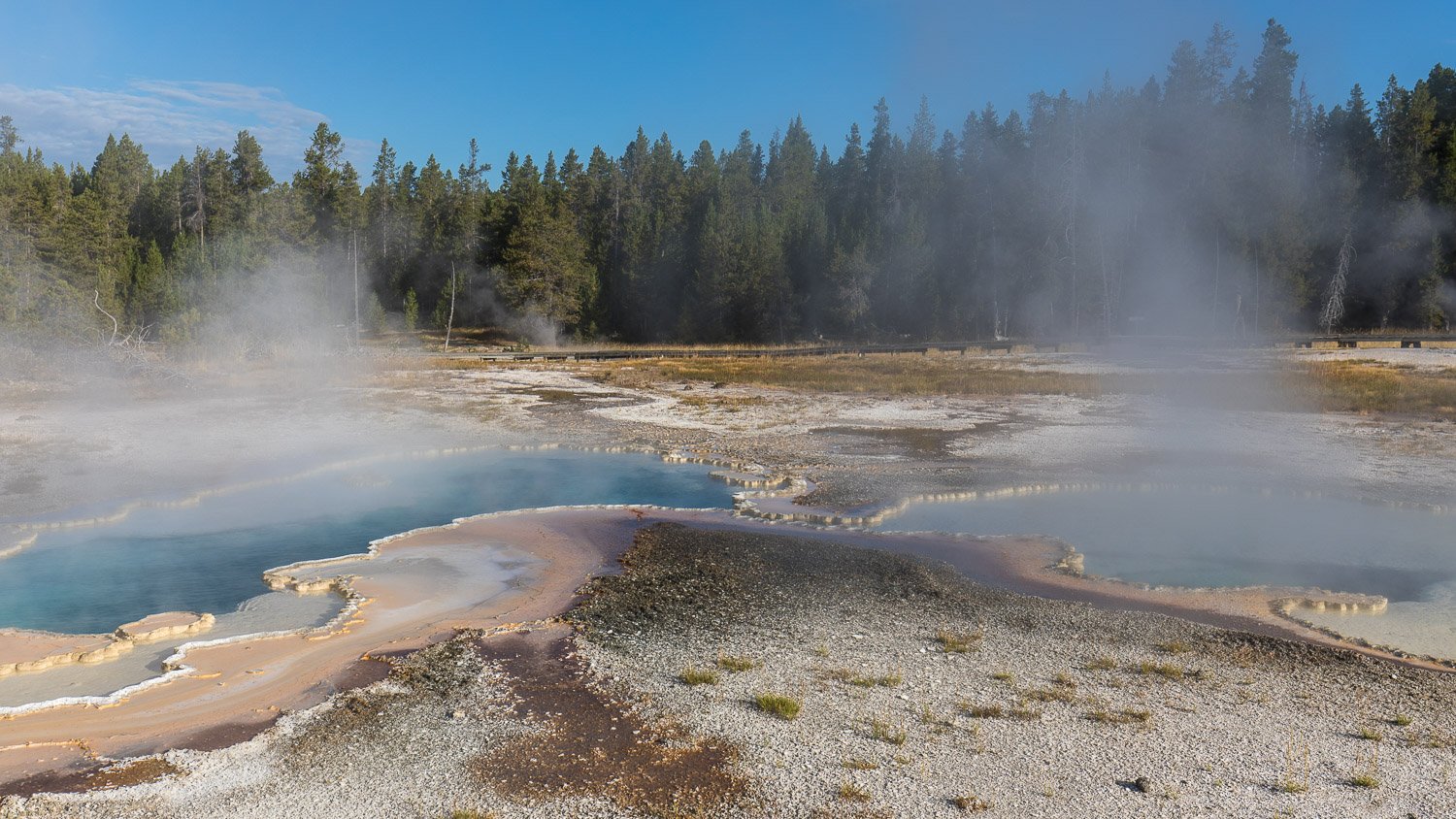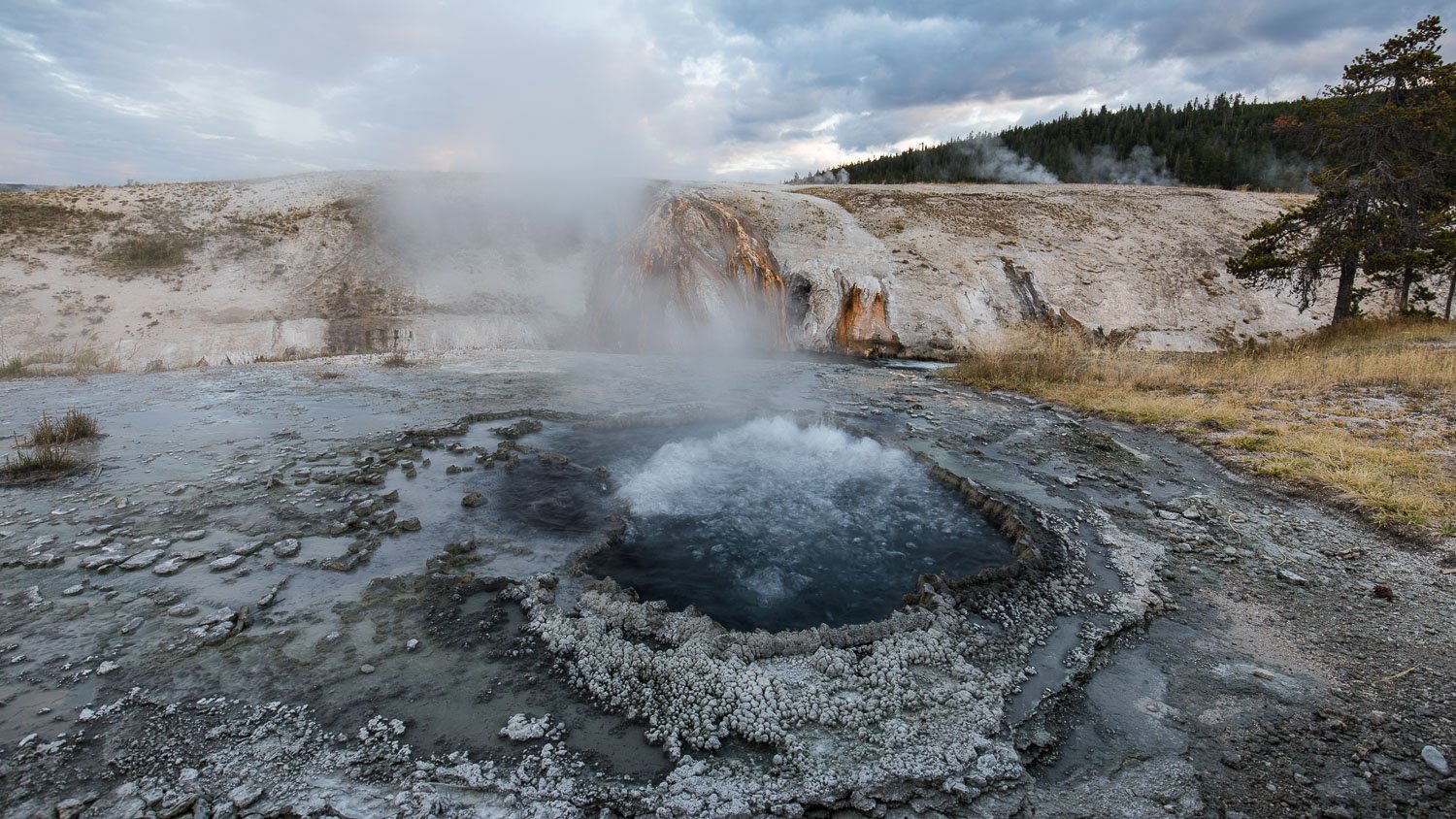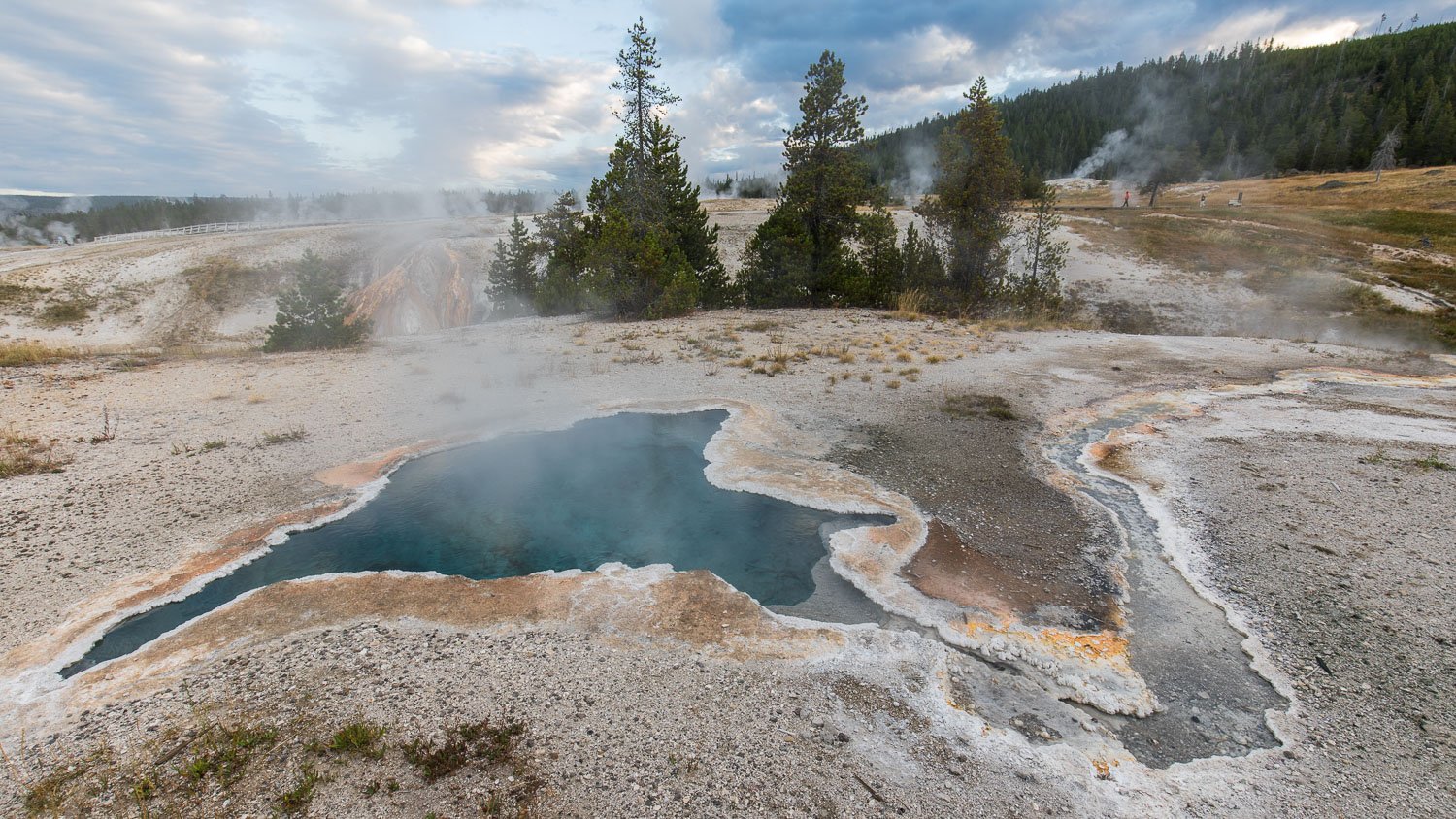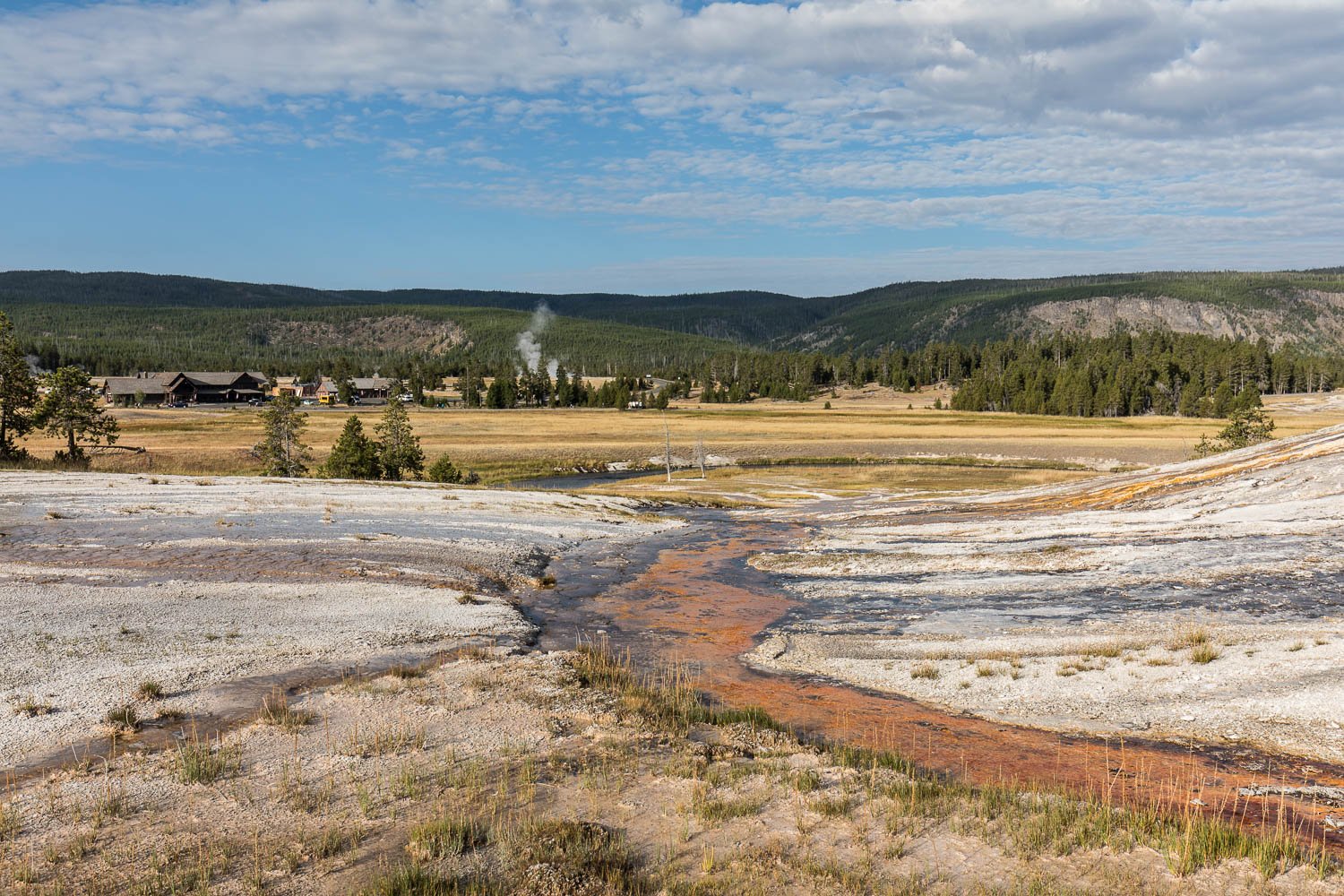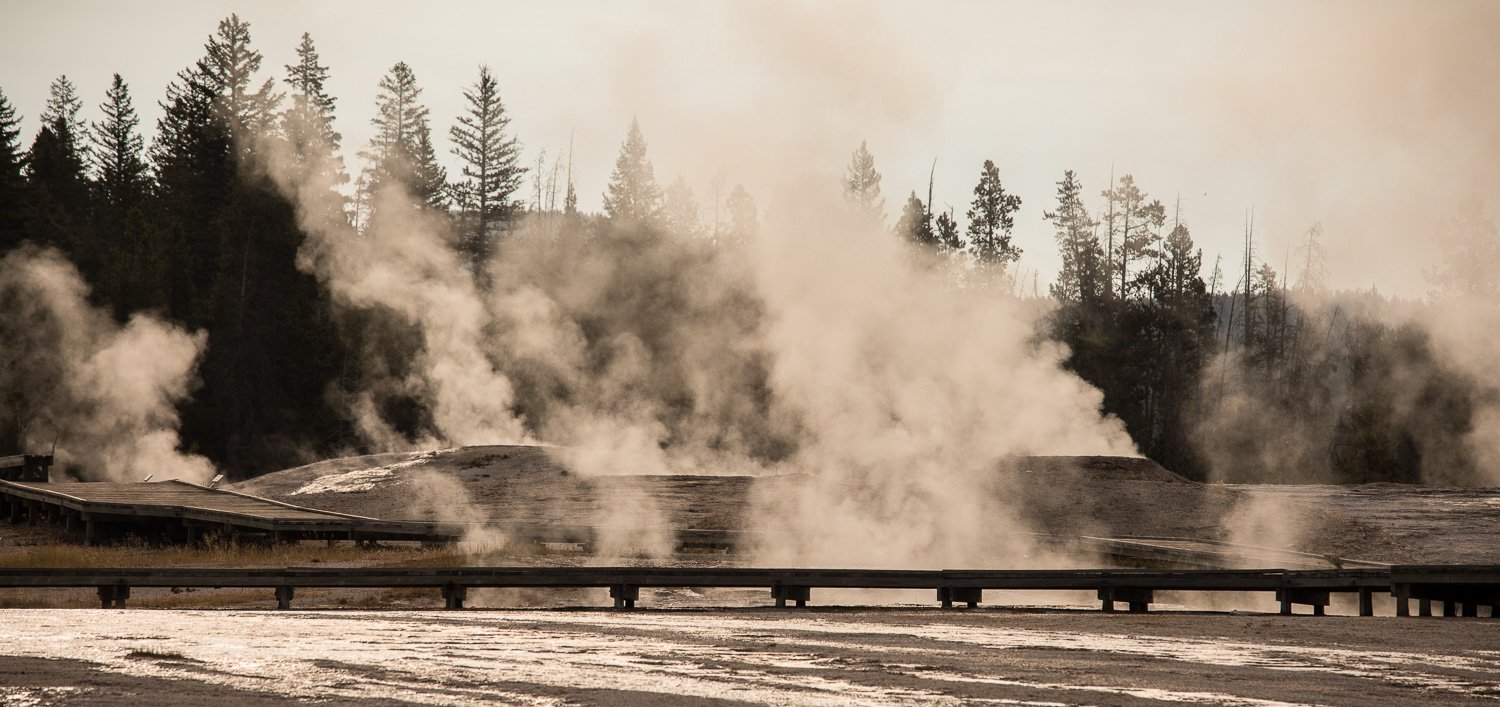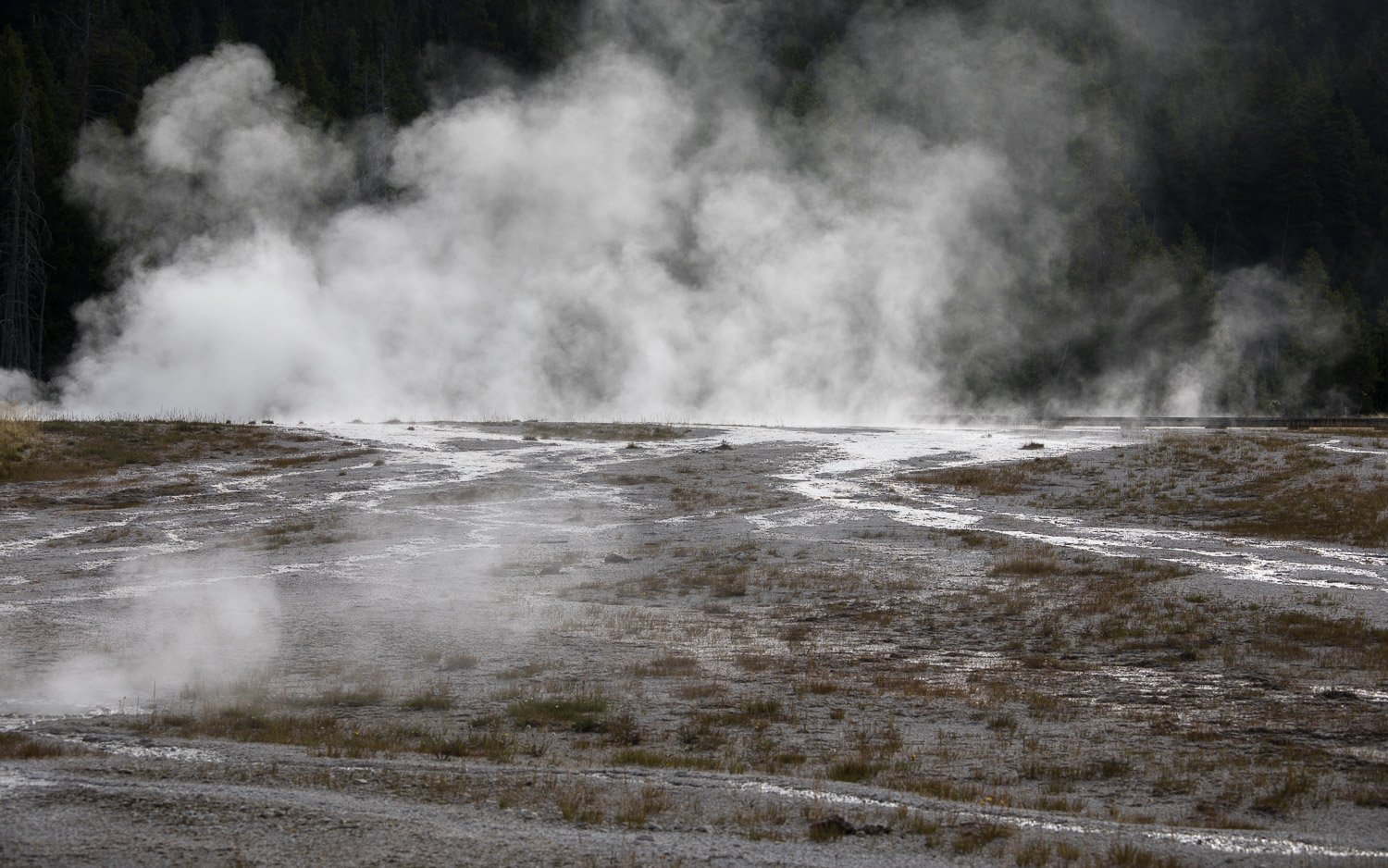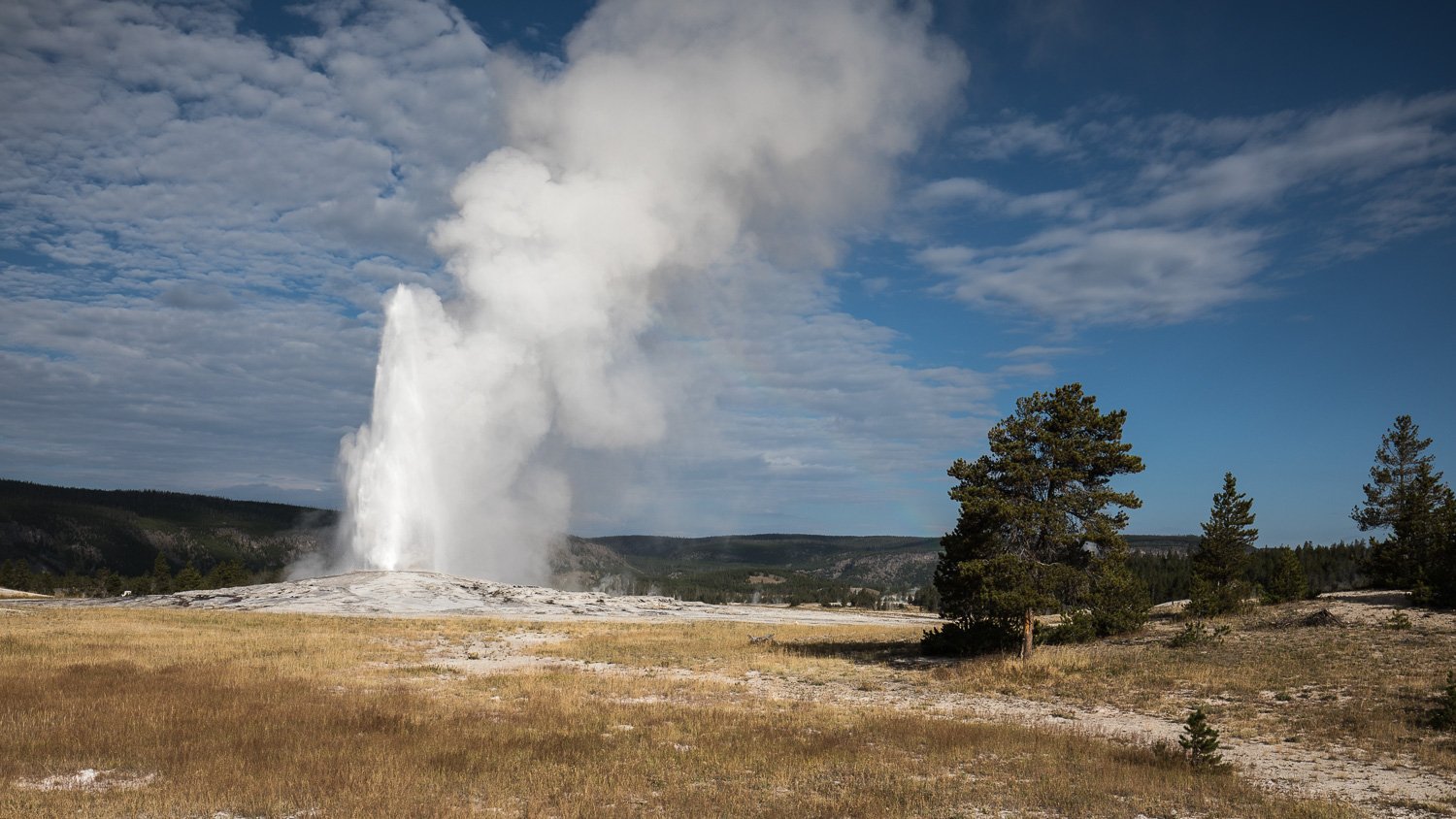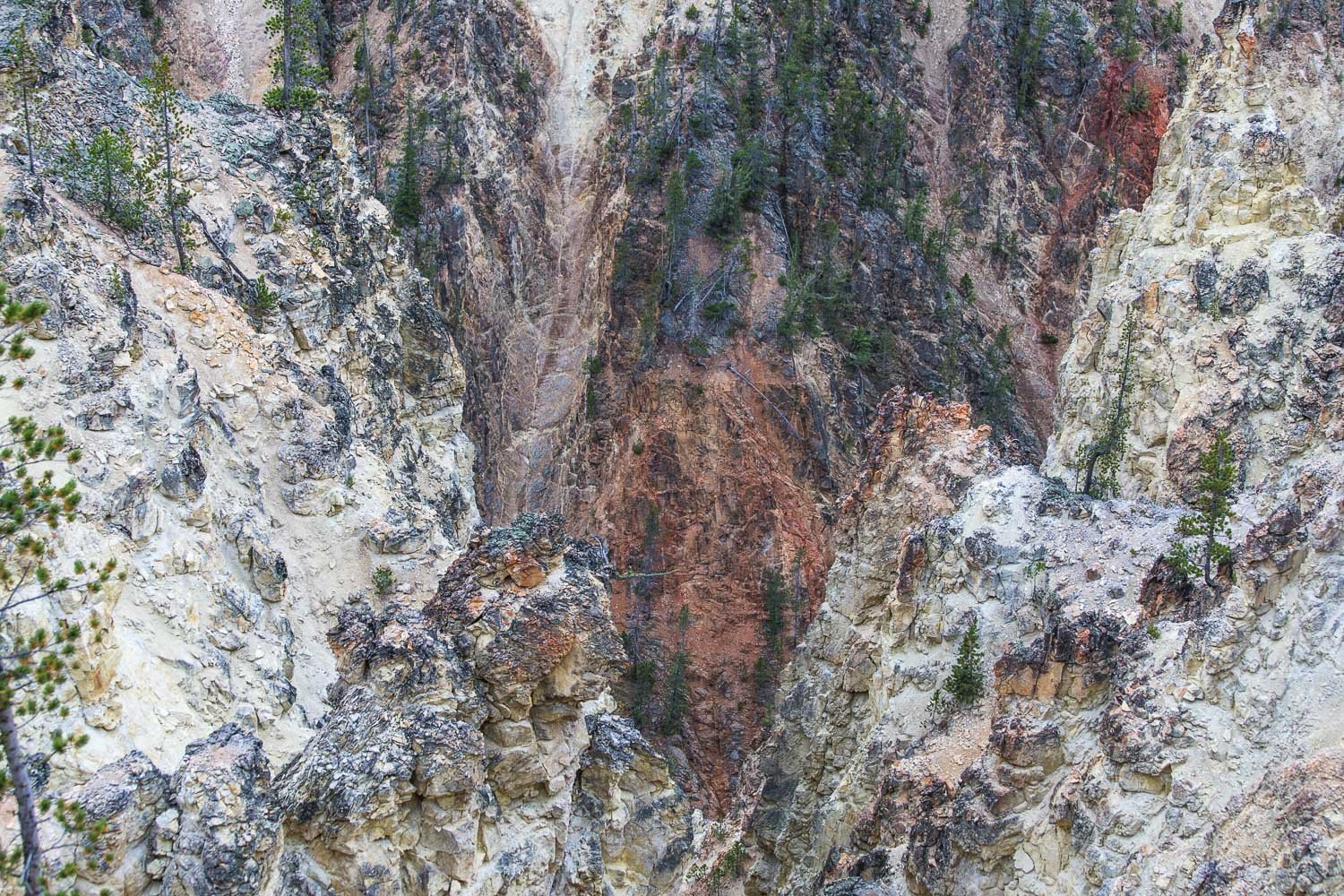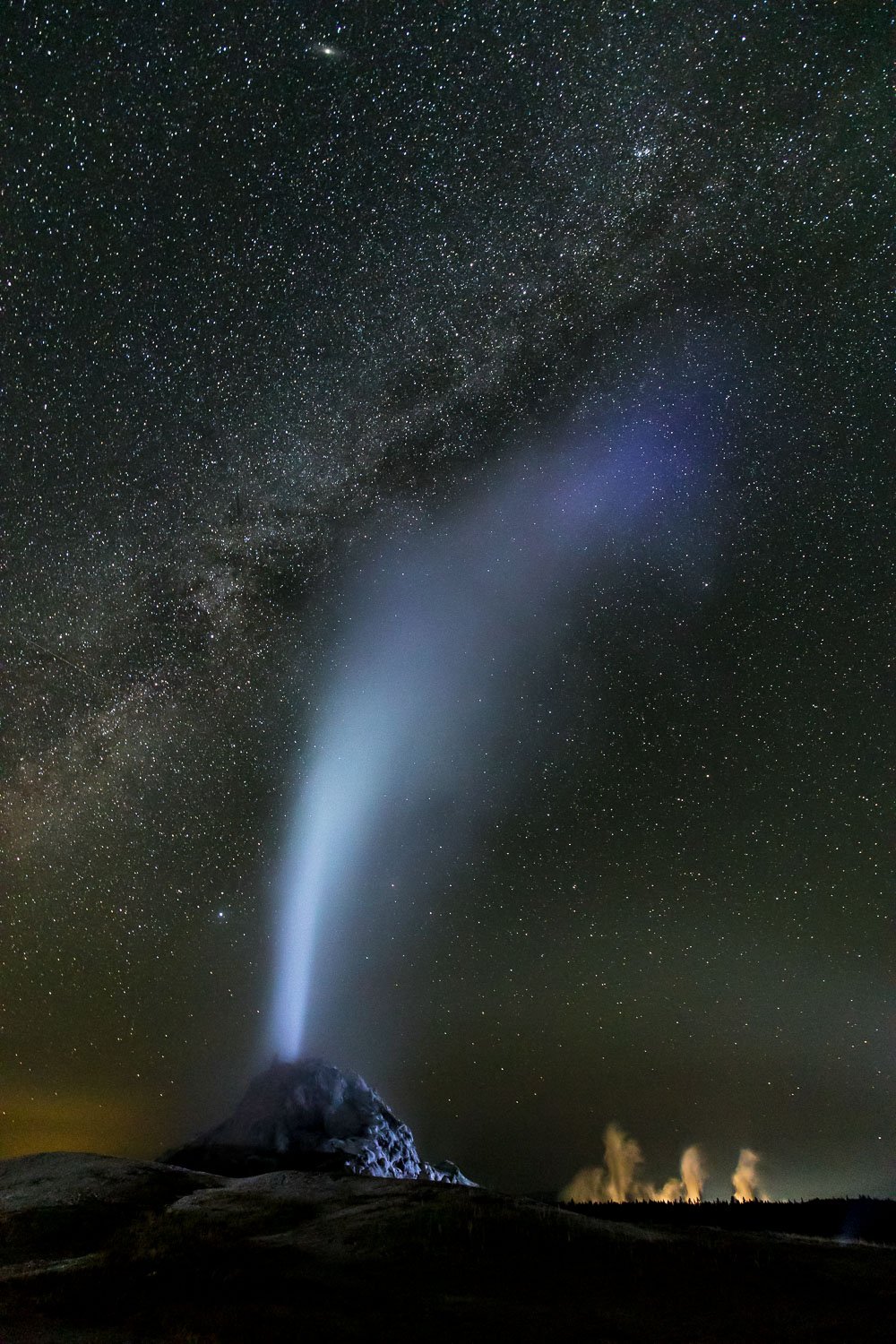Yellowstone National Park
And so to follow on from my previous post about Grand Teton National Park…
In August 2017, I travelled to the United States for the first time for a trip to the Grand Teton and Yellowstone National Parks, which was timed to coincide with a total solar eclipse. I left you last time having arrived in West Yellowstone.
As I had been stunned by the beauty of the Grand Teton, Yellowstone had a lot to live up to, but it delivered. Located mostly in Wyoming, with small sections in Montana and Idaho, Yellowstone National Park was established on March 1, 1872. It was the first national park in the U.S. and is also widely held to be the first national park in the world. The park is known for its wildlife and its many geothermal features, especially Old Faithful geyser, one of its most popular features and which we, of course, visited.
Native Americans have lived in the Yellowstone region for at least 11,000 years. Aside from visits by mountain men during the early-to-mid-19th century, organised exploration did not begin until the late 1860s.
Yellowstone National Park spans an area of 3,468.4 square miles (8,983 km2), comprising lakes, canyons, rivers and mountain ranges. Yellowstone Lake is one of the largest high-elevation lakes in North America and is centred over the Yellowstone Caldera, the largest supervolcano on the continent. Half of the world's geysers and hydrothermal features are in Yellowstone, fuelled by this ongoing volcanism. Lava flows and rocks from volcanic eruptions cover most of the land area of Yellowstone. The park is the centrepiece of the Greater Yellowstone Ecosystem, the largest remaining nearly-intact ecosystem in the Earth's northern temperate zone. In 1978, Yellowstone was named a UNESCO World Heritage Site.
The park contains the headwaters of the Yellowstone River, from which it takes its historical name. Near the end of the 18th century, French trappers named the river Roche Jaune, which is probably a translation of the Hidatsa name Mi tsi a-da-zi ("Yellow Rock River"). Later, American trappers rendered the French name in English as "Yellow Stone".
After checking in to our hotel, we headed out for a drive round Firehole Lake Drive and visit to White Dome Geyser, which is in the park’s Lower Geyser Basin. White Dome is a conspicuous cone-type geyser and is one of the largest in the park. Although its eruptions are unpredictable, they generally occur with intervals ranging from 15 minutes to 3 hours, with between 20 and 35 minutes most common. We certainly didn’t have to wait long. When it did happen, there was no warning other than a little spitting beforehand, and then ‘whoosh’.
Click on all the images to see them full size
Our first full day in the park started with a trip to see Old Faithful and a general wander around its environs. A geothermal landscape has quite an alien feel to it with the bubbling water, steam and smells, but quite fascinating.
With all my wanderings, I almost missed Old Faithful erupting, which is some feat as it is highly predictable; it’s erupted every 44 minutes to 2 hours since 2000. Eruptions can shoot 14,000 to 32,000 litres of boiling water up to a height of 32 to 56 m. Like White Dome Geyser, it’s a cone geyser.
The first geyser in the park to be named, Old Faithful was given its moniker in 1870. In the park’s early days, it had the ignominy of often being used as a laundry. Garments placed in the crater during quiescence were then ejected thoroughly washed when the eruption took place. It was found that linen and cotton fabrics were unaffected by the action of the water, but woollen clothes were torn to shreds.
Next stop was the Artists Paint Pots, a group of over 50 springs, geysers, vents and especially mud pots, which were incredibly mesmeric to watch. These all exhibit varying shades of blue, grey and brown, and have a range of different textures, with the behaviour changing during the year depending on the amount of subterranean water.
Next up on the agenda was Lower Yellowstone Falls, one of the iconic views of the park. This was a reconnaissance visit, as we intended to do a sunrise shoot at this location later in the week. The light wasn’t great, but there were some lovely colours in the canyon rocks.
One of the highlights of the park for me was the Norris Geyser Basin; the area is huge and, unfortunately, we didn’t have time to explore it all so I’m unable to tell you anything about Porkchop Geyser, Puff ‘n Stuff Geyser or Palpitator Spring (who is in charge of naming!) amongst others.
Norris is one of the hottest and most acidic of Yellowstone’s hydrothermal areas; most of the geyser basins in the park are alkaline. Here, many of the hot springs and fumaroles, an opening that emits steam and gases, have temperatures above boiling point. It is so hot and dynamic because the basin sits at the intersection of three faults. Two of these faults intersect with the ring fracture zone that resulted from the creation of the Yellowstone Caldera of 640,000 years ago.
We spent some time in one of the main areas, Porcelain Basin, where we were greeted by rainbow colours, hissing steam and pungent odours. It felt like a living, breathing landscape.
The milky colour of the mineral deposited here inspired the basin’s name. The mineral, siliceous sinter, is brought to the surface by hot water and forms a "sheet" over this flat area as the water flows across the ground and the mineral settles out. This is the fastest changing area in Norris Geyser Basin, and siliceous sinter is one of the agents of change. If the mineral seals off a hot spring or geyser by accumulating in its vent, the hot, pressurised water may flow underground to another weak area and blow through it. Siliceous sinter is also called geyserite. Deposits usually accumulate very slowly, less than one inch (2.5cm) per century, and form the geyser cones and mounds seen in most geyser basins.
The bright colours all round are stunning, but are something of a toxic beauty. The blue pools are saturated with silica; some of the orange results from minerals containing elements such as iron and arsenic; and thermophiles, those amazing micro-organisms that can survive at relatively high temperatures, create many of the colours such as orange, greenish black and emerald green.
Whilst there, we had an incredibly thunderous sky (thankfully it didn’t produce any rain), which set off the colours of the basin wonderfully.
Next up was Mammoth Hot Springs. You’ll be getting the picture by now; lots and lots of geothermal activity to be seen, but within that lots of variety. Mammoth Springs was different again - it reminded me of Pamukkale in Turkey. And guess what? They are both travertine terraces.
Mammoth Hot Springs is a large complex of hot springs on a hill of travertine. It was created over thousands of years as hot water from the spring cooled and deposited calcium carbonate (over two tons flow into Mammoth each day in a solution). Because of the huge amount of geothermal vents, travertine flourishes. Although these springs lie outside the caldera boundary, their energy has been attributed to the same magmatic system that fuels other Yellowstone geothermal areas.
The hot water that feeds Mammoth comes from Norris Geyser Basin after traveling underground via a fault line that runs through limestone. The limestone from rock formations along the fault is the source of the calcium carbonate. Shallow circulation along this corridor allows Norris's superheated water to slightly cool before surfacing at Mammoth. Algae living in the warm pools have tinted the travertine shades of brown, orange, red, and green.
Terrace Mountain at Mammoth Hot Springs is the largest known carbonate-depositing spring in the world. The most famous feature at the springs is the Minerva Terrace, a series of travertine terraces. It’s amazing anything grows there.
Of course, Yellowstone isn’t just about the geothermal landscape; there is a plethora of wildlife too. Much as we tried, we didn’t set eyes on a bear, but that probably isn’t surprising as there aren’t that many there. Only about 150 grizzly bears have home ranges in, or partially in, the park. What we did see, in fairly large numbers at times, were bison, the national mammal of the U.S. which once roamed North America in vast herds. Its historical range, by 9000 BCE, is described as the great bison belt, a tract of rich grassland that ran from Alaska to the Gulf of Mexico, east to the Atlantic Seaboard (nearly to the Atlantic tidewater in some areas) as far north as New York and south to Georgia and, according to some sources, down to Florida, with sightings in North Carolina near Buffalo Ford on the Catawba River as late as 1750. It nearly became extinct by a combination of commercial hunting and slaughter in the 19th century and introduction of bovine diseases from domestic cattle. With a population in excess of 60 million in the late 18th century, the species was down to 541 animals by 1889. That’s an horrendous figure! Recovery efforts expanded in the mid-20th century, with a resurgence to roughly 31,000 animals today, largely restricted to a few national parks and reserves. Spanning back many centuries, Native American tribes have had cultural and spiritual connections to the American bison.
They are quite magnificent beasts and to be treated with caution. We made sure that we didn’t get too close; not something that some tourists observed. The bison were very good at blocking roads too, pretty much like the Highland cows do on the west coast and islands of Scotland.
Morning Glory means different things to different people; there was a hilarious conversation in our vehicle with two people talking about it at completely cross purposes. In this case it’s a pool. It was named by Mrs E. N. McGowan, wife of Assistant Park Superintendent, Charles McGowan in 1883. She called it "Convolutus", the Latin name for the morning glory flower, which the spring resembles. By 1889, the name Morning Glory Pool had become common usage in the park.
The distinct colour of the pool is due to bacteria which inhabit the water. On a few rare occasions the Morning Glory Pool has erupted as a geyser, usually following an earthquake or other nearby seismic activity.
Several entryways have been clogged due to objects being thrown in by tourists, reducing the hot water supply, and in turn altering the overall appearance of the pool. Several attempts by park officials to artificially induce eruptions to clear the pool of debris and clear blocked entryways have been met with mixed results. An interpretive sign, placed near the pool by the park service, discusses the damage caused by ignorance and vandalism and suggests that Morning Glory is becoming a "Faded Glory."
I think it looks like the eye of a dragon!
I’ve said before that there is often discomfit involved in capturing shots. This trip would not have been complete without one such occasion: getting up silly o’clock to shoot the Milky Way over White Dome Geyser. The hardest bit is always sticking my big toe out of bed and levering myself up; after that it’s a doddle. But the lure of attempting some astrophotography for the first time was incentive enough. The few of us mad enough to get up piled into one of the vehicles and set off. And we weren’t disappointed. The Milky Way was out and White Dome obliged by erupting several times for us - I think it was worth getting up for!
You’d think that after our ridiculously early start that we would go back to bed. Not a chance! It was then on to Lower Yellowstone Falls for sunrise.
Cascading from the 590,000 year old Canyon Rhyolite lava flow, Lower Yellowstone Falls is the largest volume waterfall in the Rocky Mountains. These falls are 308 feet (94 m) high, or nearly twice as high as Niagara Falls.
It was beautiful watching as the sun rose and the light caught the rocks showing off their warm hues of yellow and pink. We had a wander round afterwards and I was struck at how similar some of the rock formations were to Zhangjiajie in China.
We ended the day at Grand Prismatic Spring. At about 110m in diameter and 50m deep, it is the largest hot spring in the U.S. and third largest in the world.
Grand Prismatic Spring was noted by geologists working in the Hayden Geological Survey of 1871, and named by them for its striking coloration. Its colours match most of those seen in the rainbow dispersion of white light by an optical prism: red, orange, yellow, green, and blue. It is an incredibly striking sight - the colours are so vibrant.
The vivid colours in the spring are the result of microbial mats around the edges of the mineral-rich water. The mats produce colours ranging from green to red; the amount of colour in the microbial mats depends on the ratio of chlorophyll to carotenoids and on the temperature gradient in the runoff. In the summer, the mats tend to be orange and red, whereas in the winter the mats are usually dark green. The deep blue colour of the water in the centre of the pool results from the intrinsic blue colour of water. The effect is strongest in the centre of the spring, because of its sterility and depth.
Our final morning in Yellowstone was spent at Old Faithful at sunrise. It certainly saw us off in style. We drove through the park back to Jackson Hole with one final stop at the Snake River Overlook before our last supper. It was a fabulous trip and I would recommend visiting both Grand Teton and Yellowstone - beautiful.





